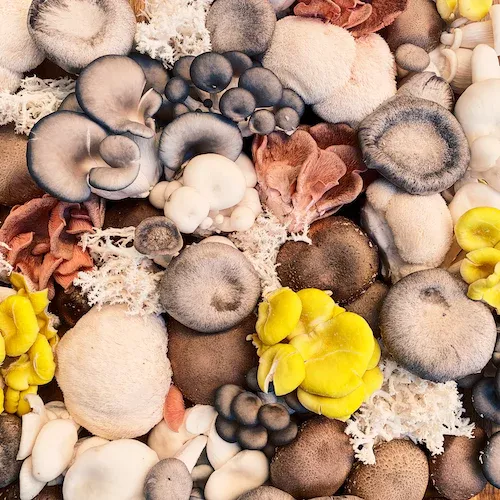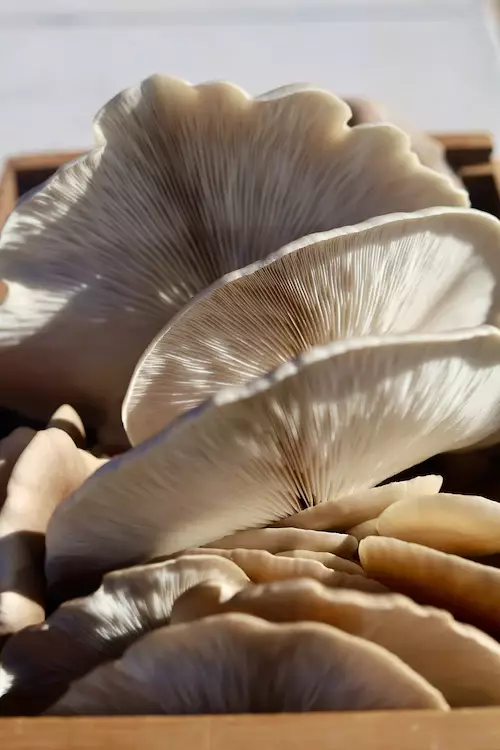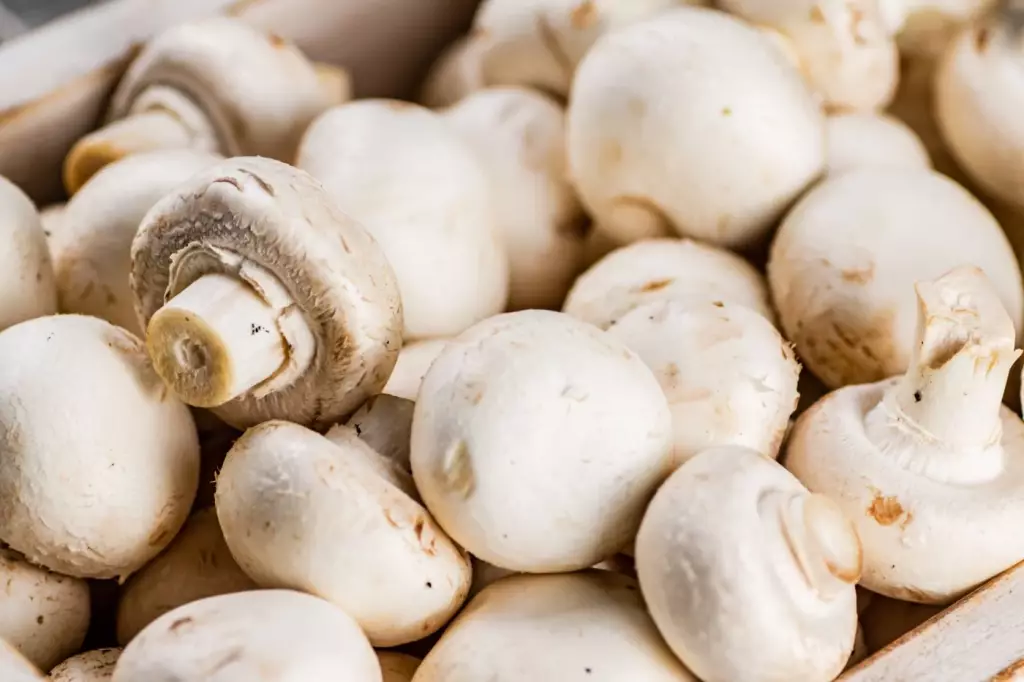Average Mushroom Yield per Bag (Oyster & Button)
With so many different types of mushrooms available on the market, it can be difficult to know which type to buy. One important factor to consider is the number of mushrooms you will get per bag. This article will look at the average mushroom yield per bag for both oyster and button mushrooms.
The average yield per bag of oyster mushrooms can range from 0.5 to 2.5 pounds (0.2 to 1.1 kg) per flush, with 2 to 4 flushes per bag. The average yield per bag of button mushrooms can range from 1.5 to 3 pounds (0.7 to 1.4 kg) per flush, with 3 to 5 flushes per bag. It can vary depending on a variety of factors.
Let's explore the differences between the two types of mushrooms, identify the factors affecting their yield rate, and provide tips on how to get the most out of your purchase.
Summary
- The average mushroom yield per bag can vary depending on a variety of factors, such as the mushroom variety, substrate, growing conditions, and cultivation method.
- It's important to note that these estimates are just averages, and actual yields can vary depending on the specific growing conditions and cultivation methods used.
- Mushroom farmers can work to optimize growing conditions and cultivation methods to maximize yields and profitability.

On this page:
How Much Does An Oyster Mushroom Yield?
Oyster mushrooms may provide an average yield per bag of 0.5 to 2.5 pounds (0.2 to 1.1 kg) per flush, with 2 to 4 flushes per bag. Accordingly, the overall yield per bag might range from 0.4 to 4.5 kilograms (1.0 to 10 pounds) per bag.
How Much Does A Button Mushroom Yield?
With 3 to 5 flushes per bag, the typical output of button mushrooms can vary from 1.5 to 3 pounds (0.7 to 1.4 kg) per flush. It follows that the total yield per bag might be anything between 4.5 and 15 pounds (2.0 to 6.8 kg).

Factors Affecting the Yield Per Bag of Mushrooms
The average yield per bag of oyster and button mushrooms can be affected by various factors, including:
1. The substrate used for growing mushrooms can have a significant impact on the yield
Common substrates for oyster mushrooms include straw, sawdust, coffee grounds, and various agricultural wastes. Common substrates include composted manure, straw, and various agricultural wastes. The quality and nutrient content of the substrate can affect the growth rate and yield of the mushrooms.
2. The quality of the spawn used to inoculate the substrate can also affect the yield
High-quality spawn that is free from contaminants and has a high rate of colonization can lead to better yields.
3. Temperature can affect the yield of the mushrooms
Oyster mushrooms grow best in a temperature range of 20–25 °C. If the temperature is too high or too low, it can affect the growth rate and yield of the mushrooms.
Button mushrooms grow best in a temperature range of 12–18 °C. If the temperature is too high or too low, it can affect the growth rate and yield of the mushrooms.
4. Humidity levels can contribute to the yield
Oyster mushrooms require high humidity levels to grow and fruit. The ideal humidity range is around 85–90%. Low humidity levels can lead to slower growth and lower yields.
Button mushrooms require high humidity levels to grow and fruit. The ideal humidity range is around 80–90%. Low humidity levels can lead to slower growth and lower yields.
5. Carbon dioxide levels affect the yield of the mushrooms
Proper air exchange is necessary for oyster mushrooms to grow and fruit. High CO2 levels can inhibit growth and reduce yields, so it is important to maintain good air circulation.
Button mushrooms require a specific range of CO2 levels for optimal growth and yield. The ideal CO2 level is around 800–1200 ppm. High CO2 levels can inhibit growth and reduce yields, while low CO2 levels can also be detrimental.
6. Light may impact the number of mushrooms produced
Oyster mushrooms require light to initiate pinning and fruiting. However, they do not require direct sunlight and can grow in low-light conditions. Button mushrooms do not require light to grow and fruit, and in fact, they grow best in darkness.
7. Proper harvesting techniques can also affect the yield
Mushrooms should be harvested at the right time, and the substrate should be handled carefully to avoid damaging the mycelium and reducing future yields.

Strategies to Maximize Yield of the Mushrooms
To maximize the yield of oyster and button mushrooms, the following strategies can be employed:
1. Proper substrate preparation can maximize the yield of the mushrooms
The substrate should be properly prepared, sterilized, and inoculated with high-quality spawn. This ensures that the substrate is free from contaminants and provides the necessary nutrients for mushroom growth.
2. The production of the mushrooms can be increased by harvesting methods
Mushrooms should be harvested at the right time. Overripe mushrooms should be removed to prevent spore release and to encourage new flushes.
-
Oyster mushrooms have a shorter harvest window and typically produce more flushes than button mushrooms. Oyster mushrooms can be harvested every 1-2 weeks over 2-3 months, while button mushrooms can be harvested over several months.
-
Oyster mushrooms can be harvested by twisting or cutting the stem at the base of the mushroom, while button mushrooms are typically harvested by pulling the mushroom out of the substrate with a slight twisting motion. Oyster mushrooms can also be harvested in clusters, while button mushrooms are usually harvested individually.
-
Oyster mushrooms should be harvested when the caps are fully opened but before the edges start to curl up. Button mushrooms should be harvested when the caps are fully opened and the veil is just starting to break.
-
Oyster mushrooms are more delicate than button mushrooms and should be handled with care to avoid bruising or damaging the mushrooms. Button mushrooms are more robust and can withstand more handling.
3. Crop rotation can raise the number of mushrooms produced
To prevent the buildup of contaminants and disease, it is important to rotate crops and avoid growing mushrooms in the same area for extended periods.
Oyster mushrooms can be grown on a wide variety of substrates, including straw, sawdust, and agricultural waste products like corn stalks or cottonseed hulls. This allows for greater flexibility in crop rotation, as different substrates can be used for each crop cycle.
Button mushrooms, on the other hand, are typically grown on a substrate of composted manure and straw, which limits the options for crop rotation.
4. Spacing and substrate depth can contribute to the mushrooms' yield
Oyster mushrooms generally require more space than button mushrooms. This is because oyster mushrooms can grow in clusters and need room to spread out, while button mushrooms grow individually and can be grown closer together.
For oyster mushrooms, a spacing of 6–8 inches between bags or blocks is recommended, while for button mushrooms, a spacing of 2-3 inches between beds or trays is common.
Oyster mushrooms can grow in a substrate depth of 4-6 inches, while button mushrooms require a substrate depth of at least 6 inches. This is because button mushrooms require more space for their mycelium to grow and develop, while oyster mushrooms can grow on a more compact substrate.

5. Supplemental nutrition sources can increase the mushrooms' output
Oyster mushrooms are generally more adaptable to a wide range of nutrient sources, including various agricultural and industrial byproducts. Some examples of supplemental nutrient sources that can be used for oyster mushrooms include soybean hulls, wheat bran, rice straw, corn cobs, and coffee grounds.
These supplemental nutrient sources can be used in combination with the main substrate to enhance nutrient content and promote optimal growth and yield.
Button mushrooms have more specific nutrient requirements and generally require a higher-nutrient substrate. Supplemental nutrient sources for button mushrooms are typically added to the compost during the composting process.
Common supplemental nutrient sources for button mushrooms include poultry manure, cottonseed meal, soybean meal, and gypsum. These nutrient sources are added to the compost in specific ratios to provide the necessary nutrients for optimal growth and yield.



